‘I’m a year older than Raidió na Gaeltachta, so I can’t remember a time that it wasn’t a presence in my life. So many memories are bound up in it,” says Gormfhlaith Ní Thuairisg, presenter of Raidió na Gaeltachta’s weekday morning news programme, Adhmhaidin.
On April 2nd, 1972, 50 years ago next weekend, the State delivered on a promise first made in the 1920s to establish a radio station dedicated to serving Irish speakers in their own language.
“It will not cost a great lot of money, and the intention is that it should provide a programme in keeping with the language of the people,” minister for posts and telegraphs JJ Walsh told the Dáil during a debate on the Wireless Telegraphy Bill in November 1926.
But by the time the 1960s came around, and with still no sign of an Irish language radio service, Irish speakers had had enough of what they saw as empty promises made by the State.
NUI Galway’s Dr John Walsh, author of 100 Years of Irish Language Policy, 1922-2022 (Peter Lang), says this delay “highlights the gap between rhetoric and reality in Irish language policy over the past one hundred years ... The founding aim of maintaining Irish in the Gaeltacht and reviving it elsewhere was not matched by policy measures robust enough to improve the chance of success.”
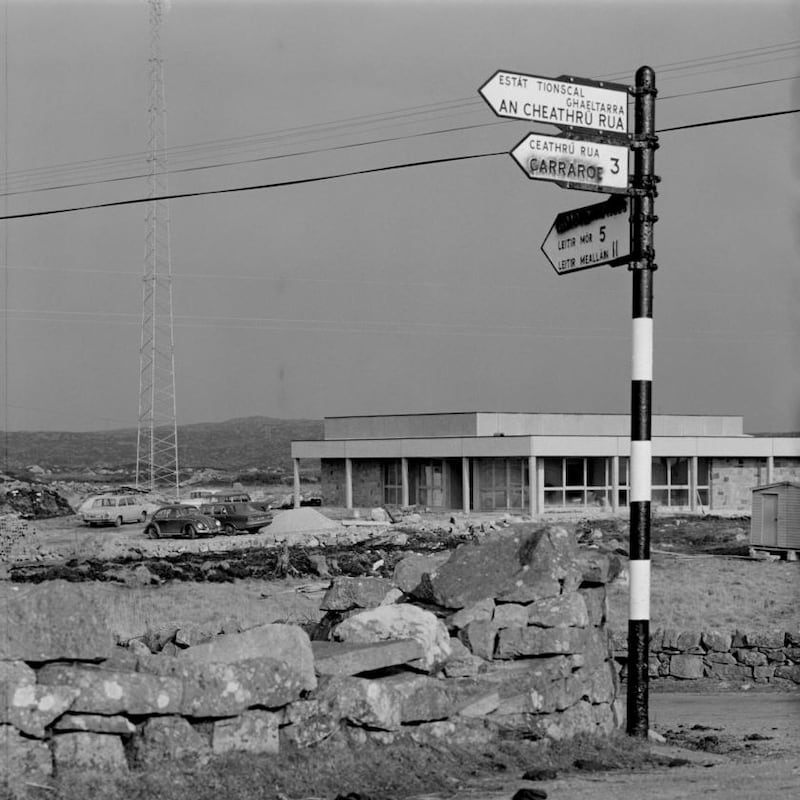
Matters came to a head in 1969 when a demonstration was held by a group of protesters opposed to the filming of English language RTÉ quiz series Quicksilver at Teach Furbo in the Connemara Gaeltacht.
Guests had been bussed in from English-speaking areas and several dozen protesters picketed the event. Four managed to infiltrate the audience and disrupted proceedings during filming.
Irish language organisation Conradh na Gaeilge held simultaneous protests outside RTÉ headquarters at the GPO and in Donnybrook, Dublin.
Demanding the same rights that were afforded to English speakers “in every area of life”, a statement issued by the organisation said: “Since the Gaeltacht is a distinct community, people of the Gaeltacht are entitled to those same rights and to special protection and assistance in maintaining their cultural identity.”
In the days following the events at Teach Furbo, Gluaiseacht Chearta Sibhialta na Gaeltachta (Gaeltacht Civil Rights Movement) was formally established. The movement reflected the broader civil rights movements of the time and one of their demands was that an Irish language radio station would be established.
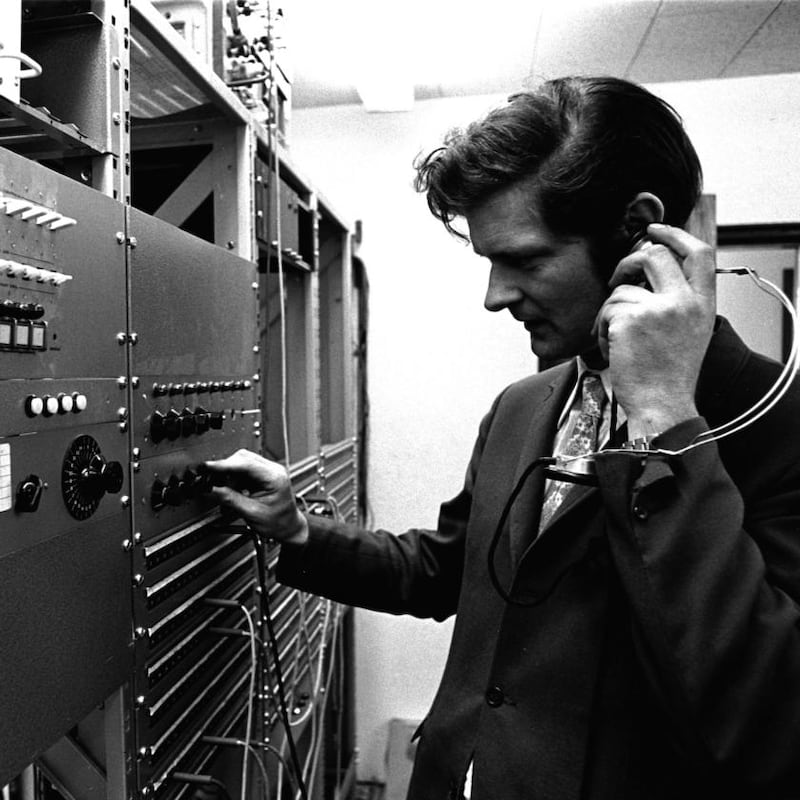
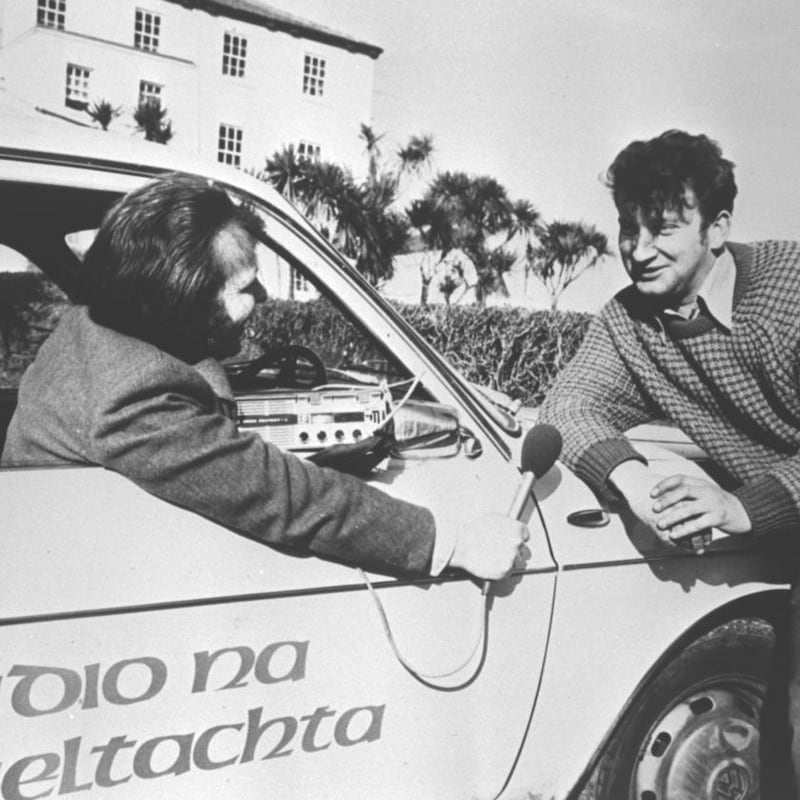
After making representations directly to RTÉ, leading members decided to take matters into their own hands. It was Easter 1970 when pirate radio station Saor-Raidió Chonamara began broadcasting from a caravan in Ros Muc.
One of the founders, Seosamh Ó Cuaig, recalls why it came about. “We thought that it would give the Gaeltacht a voice and that we could reach Irish speakers across the country. We hoped it would encourage dialogue between Gaeltacht communities and that it would encourage and inspire the community, that it would be something that they could be proud of.”
'I fully believe that the Gaeltacht that we have now would not exist without Raidió na Gaeltachta. It legitimised and gave status to Gaeltacht culture'
The pirate station, which broadcast a week-long series of programmes of music, chat and news, had an immediate impact. It may have had a limited range of about 20 miles, but it was heard as far away as Oileáin Árann and An Spidéal and offered listeners something they had never experienced previously: access to a radio service broadcast in their own language.
The operators were quick to build up a rapport with the audience and concluded the week with an open-air céilí broadcast live on air.
“The listeners loved the weather forecast,” recalls Ó Cuaig. “Piaras Ó Gaora would look out the window, take a look at the sky and say ‘beidh sé ag báisteach trathnóna inniu [it’s going to rain this evening]’. And sure enough it did. People said our forecast was much better than RTÉ’s. That now is local radio for you.”
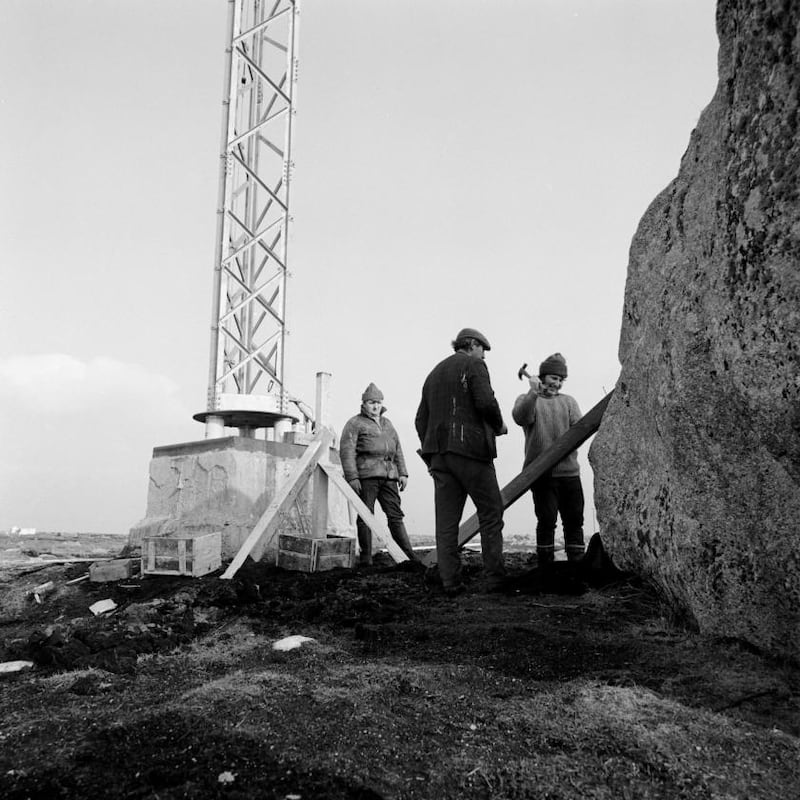
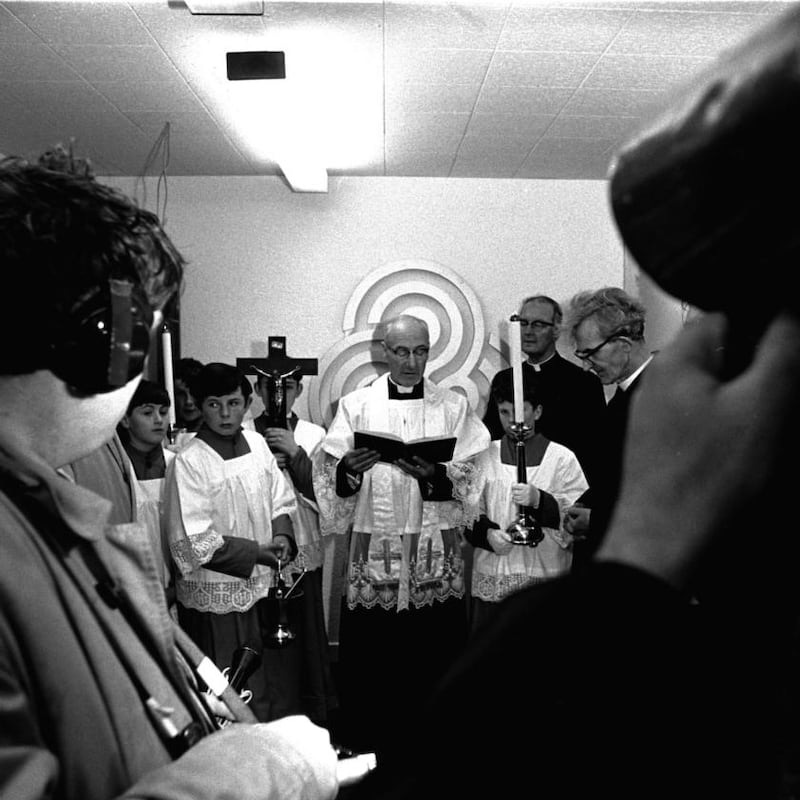
Saor-Raidió Chonamara took to the air once more later that year to cover Oireachtas na nGael, but the State was about to deliver on its long-standing promise. It turned out that there were some in government and indeed in RTÉ (including then director general Tom Hardiman) who were favourably disposed to the idea of an Irish language radio station.
In November 1970, minister for finance George Colley announced details of the station, which would provide a “a full broadcasting service embracing news coverage and a comprehensive schedule of features reflecting all aspects of the social, cultural and economic life of the Gaeltacht”.
On April 2nd, 1972, RTÉ Raidió na Gaeltachta (RnaG) came into being.
“Raidió na Gaeltachta anseo agaibh!” With those words, RnaG station head Pádraig Ó Raghallaigh introduced the inaugural address by president Éamon de Valera, and a new era in Irish radio broadcasting began. For the first time in the history of the State, Gaeltacht areas would be provided with public service broadcasting in their own language, something the rest of the Irish radio-listening public had long taken for granted.
In addition to the main transmitters in Casla, Na Doirí Beaga and Corca Dhuibhne, low-power transmitters were built to serve Gaeltacht areas in Mayo, west Cork, Waterford and Meath.
By drawing on the interests and musical tastes of people living in the Gaeltacht, the new station quickly reflected the culture of the communities it was founded to serve.
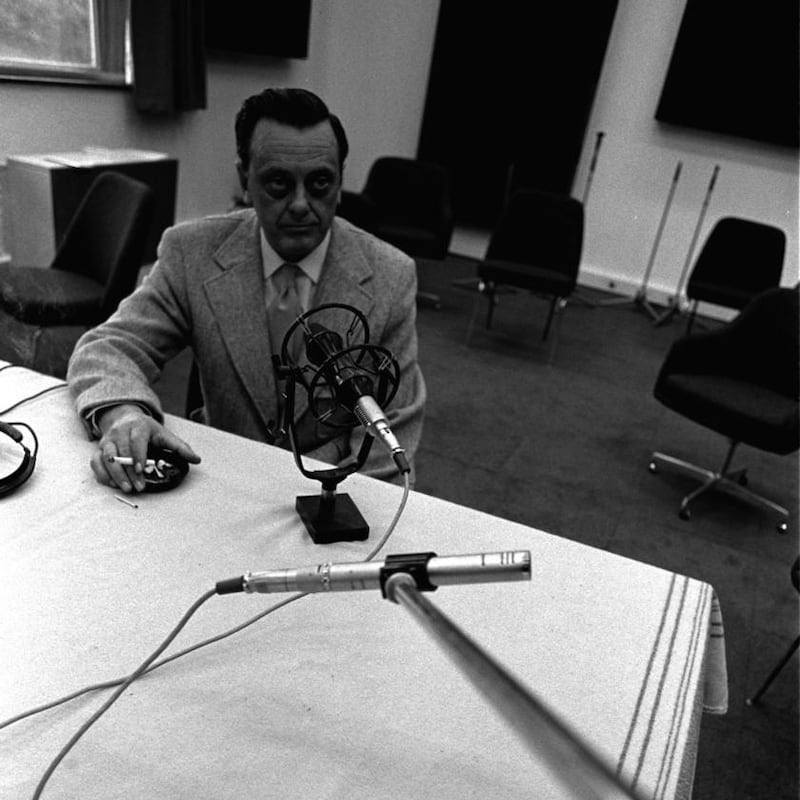
For Gormfhlaith Ní Thuairisg (whose father, Seosamh, was also involved with Saor-Raidió Chonamara), Raidió na Gaeltachta is firmly embedded in her childhood memories.
“Maidhc Sé’s sports commentary in the car at the beach, the sudden shock of hearing of someone’s death on the fógraí báis [death notices], and in a general election my father bent over the radio jotting down count results on the back of a cigarette packet,” she recalls.
'Raidió na Gaeltachta has forged a deep connection with Gaeltacht communities throughout Ireland'
“I have vivid memories of the Raidió na Gaeltachta signature tune [played by Máirtín Shéamuis Ó Fátharta] coming on at 11 o’clock on summer mornings, as we prepared dinner for Irish students. I still find that familiar trumpa [jaw harp] theme, that everyone in Conamara recognises, strangely comforting.”
News and current affairs, including the regional news service, continue to form the backbone of the service, but RnaG in 2022 is a national broadcaster with a global reach. Despite having contributors throughout the world, the station continues to share many of the attributes usually associated with successful community radio stations.
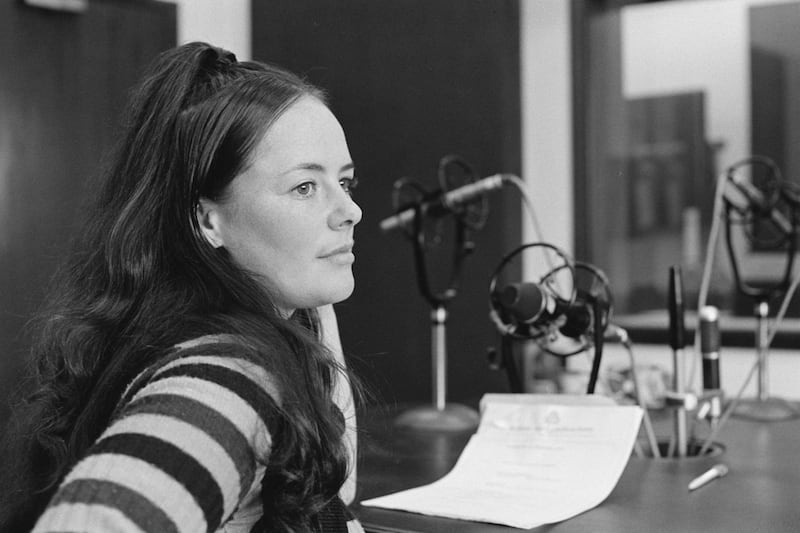
"Raidió na Gaeltachta has forged a deep connection with Gaeltacht communities throughout Ireland and, by linking the scattered Irish-speaking districts on air, it has strengthened the sense of Gaeltacht identity," says NUI Galway's Dr Walsh.
Similar to community radio stations, the station is operated and influenced by the community it serves, and a strong relationship has been cultivated between audience, language and programming at the station.
“It has developed the Irish language itself, both by showcasing Gaeltacht dialects and disseminating new terminology through news, current affairs and sport,” says Walsh.
Edel Ní Chuireáin, former ceannaire, or head of service of Raidió na Gaeltachta, says “spiorad pobail” [community spirit] lies at the heart of the station’s success.
“Raidió na Gaeltachta is very close to its audience,” she says. “The people who work there are themselves members of Raidió Na Gaeltachta’s audience. They come from the Gaeltacht and understand why the service was set up in the first place.
“They know the history behind the station and the struggles fought by our predecessors to secure a radio service for the Gaeltacht community.”

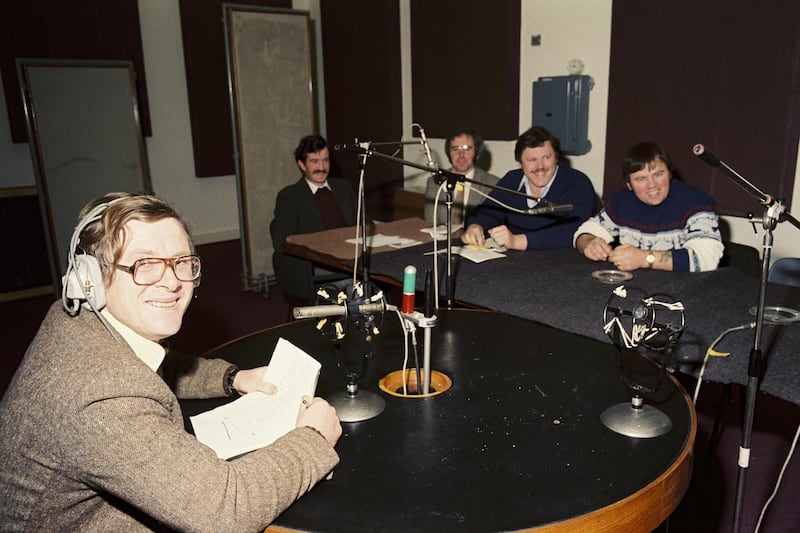
Platforms where listeners can exchange information and opinions in their own language are not only important for the service they provide, but they are also key to supporting linguistic and cultural pluralism.
For Ní Thuairisg, the establishment of RnaG was “the single most important development” in the recent history of the Gaeltacht.
'Without Raidió na Gaeltachta, who would share the countless songs composed in Irish in the last 50 years?'
“I fully believe that the Gaeltacht that we have now would not exist without Raidió na Gaeltachta,” she says. “It legitimised and gave status to Gaeltacht culture. It allowed Gaeltacht communities to talk to one another, to express themselves and to do so without need for explanation or excuse.”
Funding for public service media faces continuing challenges in Ireland, and this is no more apparent than at RnaG as the station does not benefit from an advertising revenue stream.
It has about 70 employees and is financially dependent on RTÉ and the licence fee (it received €8.14 million from licence fee revenue in 2020) to deliver on its public service remit.
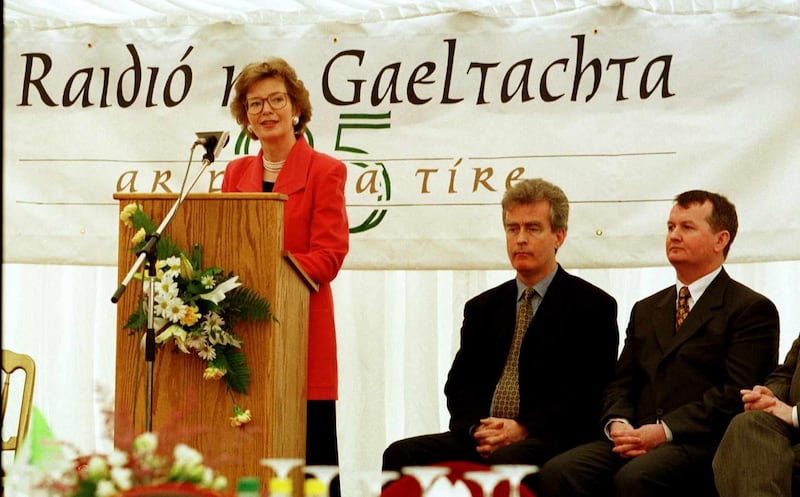
“Everyone knows the financial pressures faced by RTÉ,” says Ní Chuireáin. “They are under terrible pressure. There was no increase in the licence and they also have fierce competition.”
“But Raidió na Gaeltachta must be treated with care and it must be properly funded. It should be understood what kind of service it provides, that it concerns our culture and heritage and that it belongs to the entire country.”
Language is much more than a means of communication; it is a vehicle for participation in community and cultural life. In a country where Irish language cultural life goes largely ignored by English language media, it could be argued the Gaeltacht would be a different place without this platform.
“Without Raidió na Gaeltachta, who would share the countless songs composed in Irish in the last 50 years? Where would our wonderful young sean-nós singers hear the great singers that came before them?” asks Ní Thuairisg.
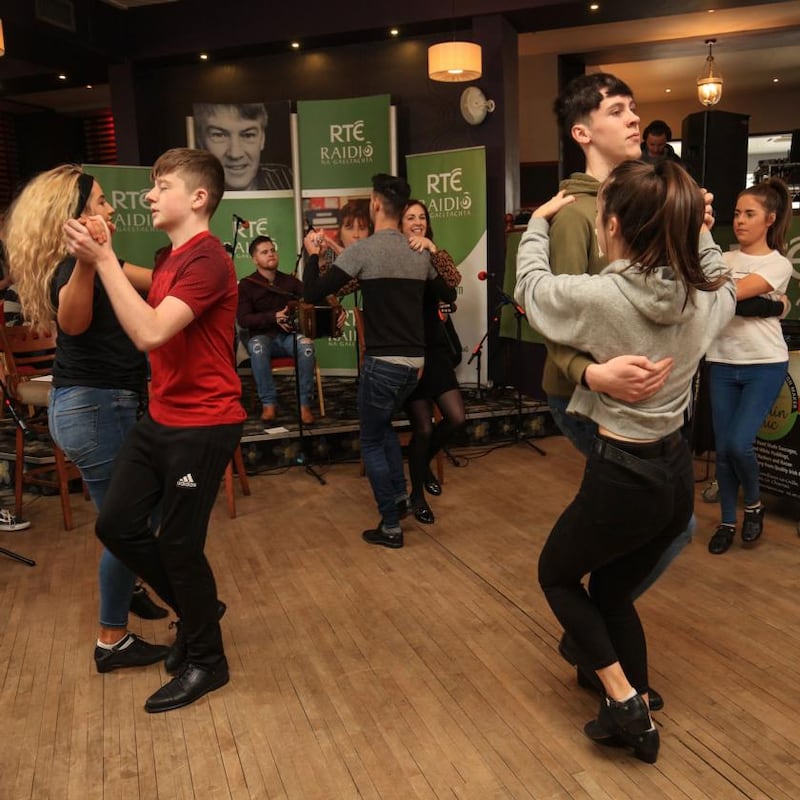

“Why would Gaeltacht politicians speak in Irish, if they only had access to English language media? The public voices of their lives: SBB [Seán Bán Breathnach], Maidhc Sé, Seosamh Ó Cuaig, Rónán Mac Aodha Bhuí, Máirtín Jamesie, Helen Ní Shé?
“Imagining a Gaeltacht without them is, to me, impossible,” she says.
People from Gaeltacht areas in all four provinces converged in their thousands on Connemara on Easter Sunday 1972 to mark the opening of Raidió na Gaeltachta. Among them were some of the greats of Irish literature, including Máirtín Ó Direáin, Máire Mhac an tSaoi, Seán Ó Riordáin and Séamus Ó Néill. Ó Direáin marked the occasion with a poem called Toirtín Cásca” (A Gift at Easter).
Toirtín Cásca
Máirtín Ó Direáin
Ba dhóbair do ghlór an chine
Imeacht na miotaí gan riailbhéas
Is gad an ghaoil á sceitheadh
Cleacht seach ár gcleacht féin
A chuaigh in airde orainn
Is chaitheamar fada go leor
Ag diúl ar chíocha eile,
Ach níor ordaigh Dia an ciorrú
Is seo chugainn áis chun labhartha
A bhainfeas dár mbéal an glas
Is a cheanglós gad caidrimh
Gad caidrimh is snáth gaoil
Idir bráithre ár gcleachta bíodh.
Ná luaitear dorchú linn feasta
Ach gile ag rince sa teanga
Béal beo is ní béal marbh
Ár dtabharas fós le fearadh
Is bhíodh ár nglór go seasta
Trí achar spáis á radadh:
Is cé nach ó inné an glór sin ársa,
Ní cailleach chrón a labhrós amach libh
Ach bruinneal óg ós í a samhail
Is í ár dtoirtín Cásca Mná í.
– RTÉ Guide, 31 Márta 1972
To celebrate 50 years since the station was founded, RTÉ Raidió na Gaeltachta will host a commemorative concert, RTÉ Raidió na Gaeltachta 50, at Telegael Studios in An Spidéal, Co Galway, next Saturday, April 2nd. The concert will feature a line-up of musicians alongside the RTÉ Concert Orchestra, including Altan, Iarla Ó Lionáird, Steve Cooney, and Muireann Nic Amhlaoibh. It will be broadcast live on air on April 2nd at 7pm, along with a livestream on rnag.ie
* This article was amended on 26/03.


















